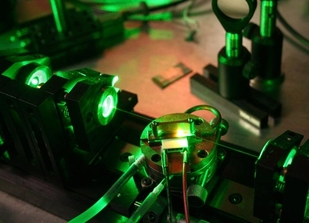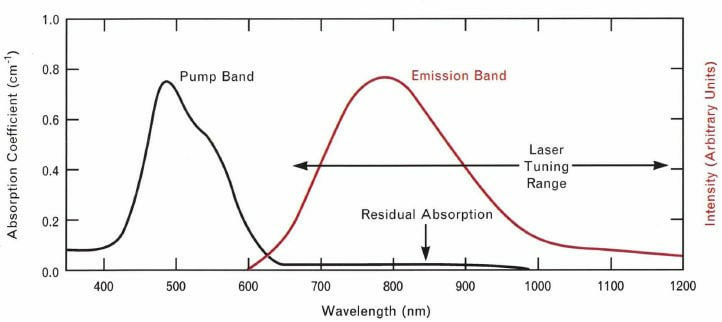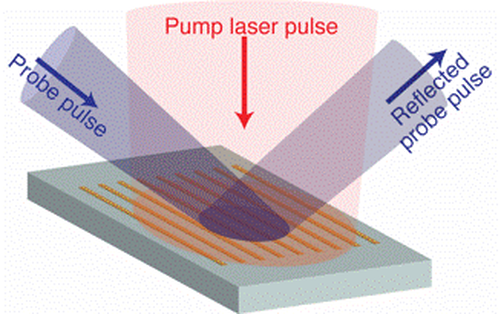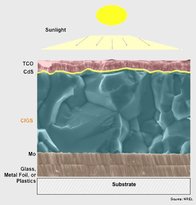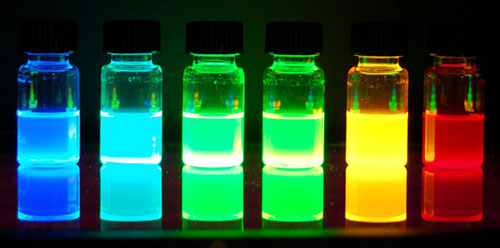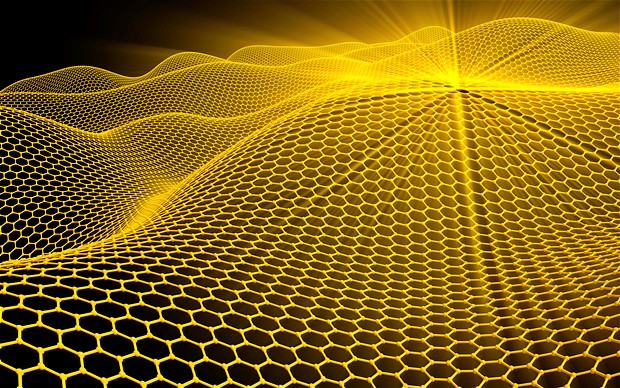|
Overview
Our lab explores optical and electronic properties that arise from dynamic processes in novel nanomaterials. At the nano scale, interactions and behaviors can become non-intuitive as quantum effects (the wave nature of the electron) play a strong role. The time scale of behaviors speeds up too because of the decreased time required to transit shorter distances for a fixed propagation velocity. The electronic and optical properties that are being discovered in this small world can offer many advantages to commercial technology – ballistic charge transport, tunability of energy levels, and strong enhancement of electric fields are just a few of the myriad effects that are being explored in a variety of semiconducting, metal, polymer, and organic structures. Understanding and controlling such processes are critical to developing commercial technologies in areas such as energy materials and computing. |
The ti:sapphire mode-locked laser
One of the key ingredients needed for measuring ultrashort timescale phenomena is a laser that produces short pulses of light.
We use a home-built laser that produces a train of short pulses of light. The duration of each pulse is around 100 femtoseconds (that’s 100 x 10^-15 seconds, or 0.00000000001 seconds!) and the separation between each pulse is about 11 nanoseconds. This means that nearly 100 million pulses per second are produced. Having many pulses allows us to perform many experiments rapidly and perform averaging to record high-quality data.
Why do we use a sapphire crystal as a gain medium for the pulsed laser?
The sapphire crystal, when doped with about 0.25% titanium atoms (the “ti:” means doped with Ti atoms), has an emission bandwidth that spans a very large range, making it possible to create a laser with a very large bandwidth. It turns out that having a broad bandwidth is critical for creating very short pulses of light. This can be seen from trying out this interactive PhET simulation about the addition of waves – select “wave packet” and then start removing high and low frequency amplitudes from the spectrum, and you will see that the resulting pulse (“Sum”) becomes wider. This is a result of the uncertainty relationship between frequency and time – the more localized a pulse is in time (read: shorter pulse), then the larger the frequency bandwidth is needed to create this. This uncertainty relation was connected to the behavior of matter by Heisenberg as he realized that matter has wave-like properties. More on this later when we discuss quantum confinement.
We pump our laser using a green diode laser (at 532 nm), and we produce laser light in the infrared – typically between 700-850 nm.
One of the key ingredients needed for measuring ultrashort timescale phenomena is a laser that produces short pulses of light.
We use a home-built laser that produces a train of short pulses of light. The duration of each pulse is around 100 femtoseconds (that’s 100 x 10^-15 seconds, or 0.00000000001 seconds!) and the separation between each pulse is about 11 nanoseconds. This means that nearly 100 million pulses per second are produced. Having many pulses allows us to perform many experiments rapidly and perform averaging to record high-quality data.
Why do we use a sapphire crystal as a gain medium for the pulsed laser?
The sapphire crystal, when doped with about 0.25% titanium atoms (the “ti:” means doped with Ti atoms), has an emission bandwidth that spans a very large range, making it possible to create a laser with a very large bandwidth. It turns out that having a broad bandwidth is critical for creating very short pulses of light. This can be seen from trying out this interactive PhET simulation about the addition of waves – select “wave packet” and then start removing high and low frequency amplitudes from the spectrum, and you will see that the resulting pulse (“Sum”) becomes wider. This is a result of the uncertainty relationship between frequency and time – the more localized a pulse is in time (read: shorter pulse), then the larger the frequency bandwidth is needed to create this. This uncertainty relation was connected to the behavior of matter by Heisenberg as he realized that matter has wave-like properties. More on this later when we discuss quantum confinement.
We pump our laser using a green diode laser (at 532 nm), and we produce laser light in the infrared – typically between 700-850 nm.
How do you study the dynamics of electrons using laser pulses?
In a few different ways. One technique is called “pump probe.” There is a nice video that discusses pump-probe spectroscopy here. The image just below also helps to illustrate the process. In essence, a pump pulse will create some excitation in a sample of material, and then a probe pulse will follow, usually a few picoseconds after the excitation pulse. By measuring the intensity or the spectrum of the probe pulse with and without the pump laser pulse, we can infer the changes in the probe that occurred because of the pump. We can then change the time delay between the pump and probe pulses and repeat the experiment. In this way we can resolve phenomena that are happening on time scales as short as the pulses themselves.
In a few different ways. One technique is called “pump probe.” There is a nice video that discusses pump-probe spectroscopy here. The image just below also helps to illustrate the process. In essence, a pump pulse will create some excitation in a sample of material, and then a probe pulse will follow, usually a few picoseconds after the excitation pulse. By measuring the intensity or the spectrum of the probe pulse with and without the pump laser pulse, we can infer the changes in the probe that occurred because of the pump. We can then change the time delay between the pump and probe pulses and repeat the experiment. In this way we can resolve phenomena that are happening on time scales as short as the pulses themselves.
How do you know that your pulses are so short?
By using the pulse to measure itself. This is the principle of autocorrelation.
By using the pulse to measure itself. This is the principle of autocorrelation.
Solar energy conversion dynamicsSunlight is converted into electricity much faster than a billionth of a second. How do you find out what's really happening? By taking snapshots on an even faster timescale...
|
Frequency conversion in quantum dotsNanocrystals are known to change color with size. How can carefully designed nanocrystals convert light into other colors efficiently? |
Single-layer thick materialsGraphene is an example of a monolayer material, having a single layer of carbon atoms with remarkably high strength and conductivity. Innovations and devices constructed from this and other related nanomaterials such as MoS2 have unusual properties yet to be explored...
|
News from the lab...
9/2018 - Former student Mike Krunic begins his graduate work in physics at San Jose State University. Congratulations, Mike!
9/2018 - Former student Mike Krunic begins his graduate work in physics at San Jose State University. Congratulations, Mike!
